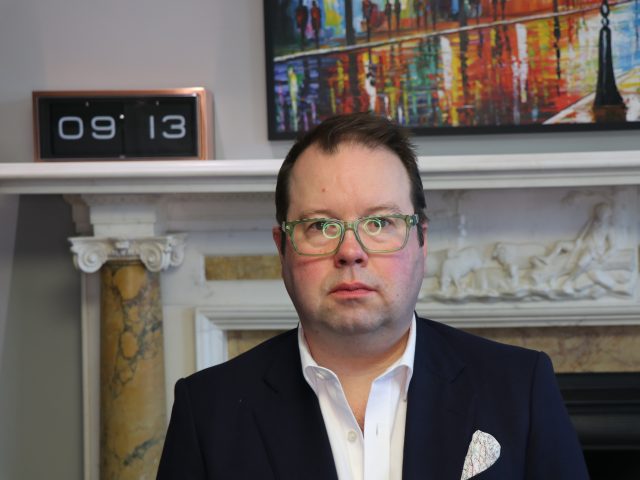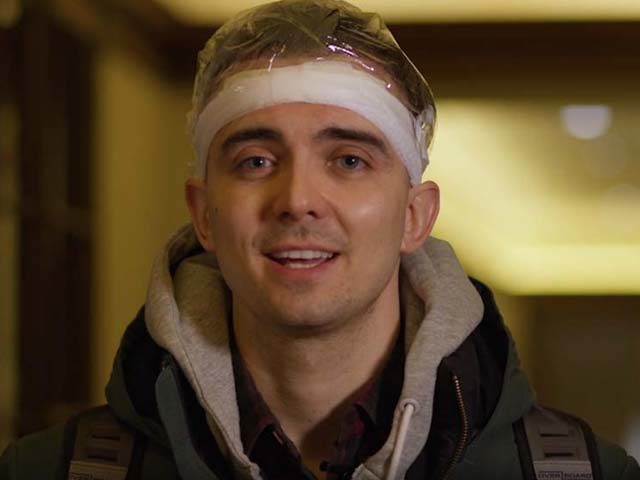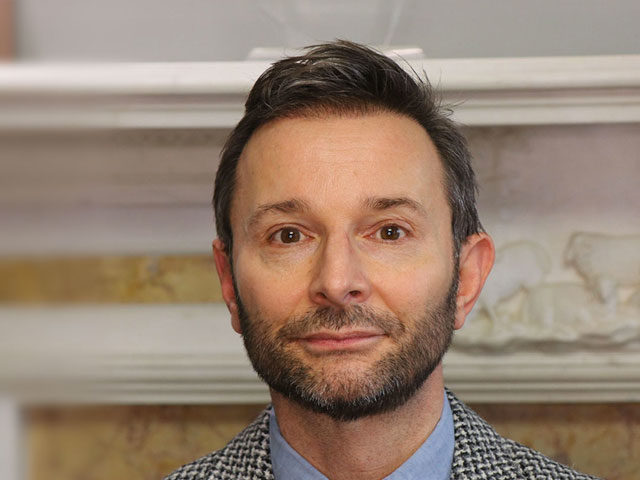I decided to have a hair transplant in November 2018. I’d been rushed to hospital with an emergency burst ulcer and had to stay in for the next two weeks undergoing several blood transfusions after coming out of intensive care. As someone who never stops and runs a fast-paced business, a long stay in hospital made me pause and reflect.
During my illness, I lost weight, and when I looked in the mirror, I realised I looked old. I’m only 56 and have experienced thinning hair since the age of 40. Without dramatising it too much, I realised time is precious and that spurred me on to do something about my hair.
I started to do some research. The most important aspect when choosing a hair transplant is how it looks after 18 months, which is the typical gestation period. So I narrowed my choice down to London-based surgeons and judged it on their final-look results, which is how I decided on Mr Chris D’Souza’s Harley Street clinic.
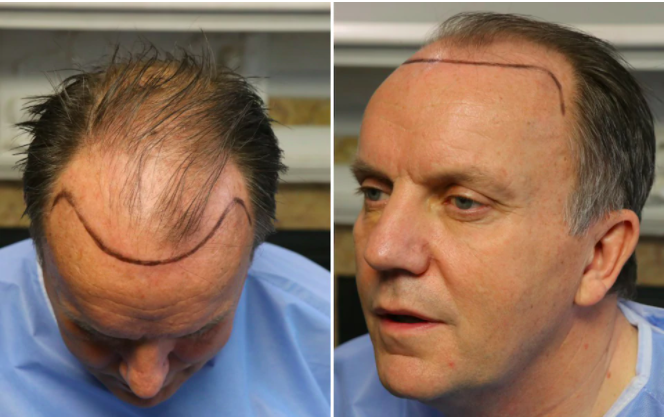
The first consultation with Mr D’Souza lasted around an hour and involved an initial evaluation of my hair and donor areas. As Mr D’Souza said, ‘Every candidate for a hair transplant is different and no two patients can be treated the same.’ He explained the difference between FUE and FUT hair transplants. FUT (follicular unit transplantation) is the most common type of transplant. More commonly known as the strip procedure, it’s where the hair is transplanted in strips of naturally occurring groups of one to four hairs. It is good for people with large areas to fill or who want a fuller look, and takes less time than FUE (follicular unit extraction), which involves extracting individual hair follicles from a donor part of the body, usually the sides and back of the head (where the hair is strongest), and which leaves only tiny dot scars. I had FUE as this was most suited to my hair loss condition (it’s usually good for smaller transplant areas).
‘The best candidates for hair treatments are those with stable hair, ie an older man,’ advises Mr D’Souza. ‘When you’re younger, it’s hard to say what your hair will do as you get older, which is why I always advise patients to wait as long as possible to ensure a hair transplant is the best option for them.’ He also advises men to consider steps to delay hair loss before having a surgical treatment. ‘Boots has an amazing hair-loss section on its website where it talks you through the first steps of stalling loss of hair and where you can order medications that helps minimise hair loss and improve the quality that you already have.’
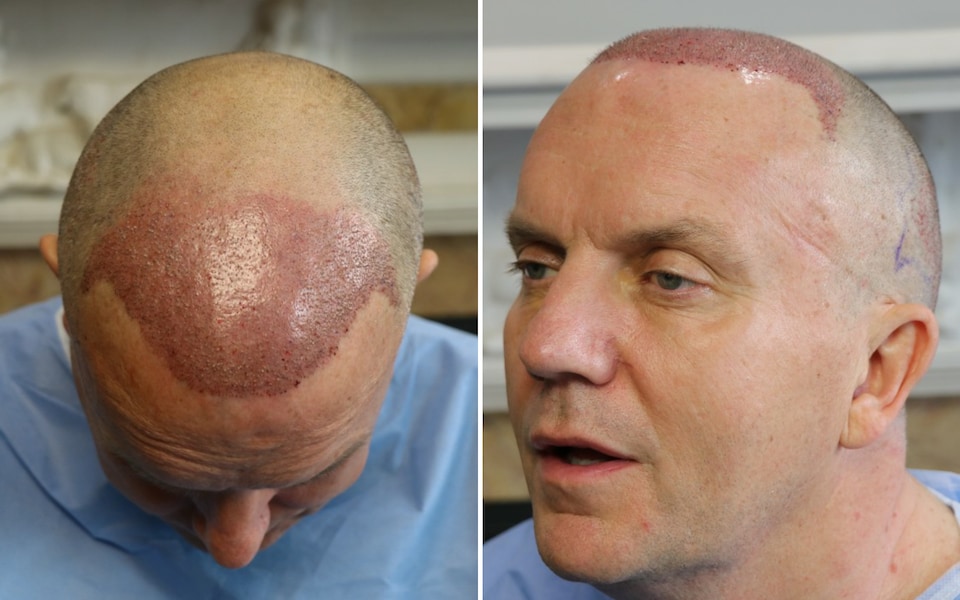
I often see hair transplants being referred to as operations, but I’d call it a procedure, one that’s less painful than a visit to the dentist. The whole thing lasted around 10 hours. I was given regular food and drinks and an impressive choice of movies to watch so the time didn’t drag.
I had over 2,000 grafts done and probably the worst part was the local anaesthetic being injected into my scalp, but once it kicked in I couldn’t feel a thing, just some pressure and someone picking at my head which is normal. I didn’t even see any blood.
Depending on the transplant method, you can choose whether you want to have your head shaved totally or not. Mr D’Souza’s job seemed to be a lot easier if I did, so I opted for this to give him the best chance of success.
Post-procedure, my hairline was red from dried blood and it formed a slight crust. It wasn’t pretty and I experienced swelling around my eyes three to four days later, which Mr D’Souza explained was quite normal. After two weeks of rest, regular paracetamol and being looked after by my wife, I felt fine.
My friends and family were totally supportive. I didn’t overly publicise that I’d had a hair transplant but I didn’t hide it either. If people asked, I told them as much as they wanted to know, although other balding men seem to have a sixth sense when it comes to spotting a transplanted hairline! Speaking to someone who has been through it seemed to give them the courage to try it, and at least four of my friends have said they are going to do it now.
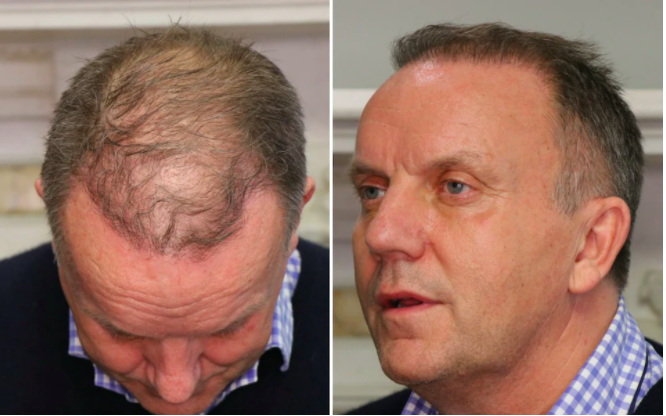
After three months, new hair started to come through, although it takes a full 18 months for it to take properly. It’s good that it’s gradual, as it would look strange if it all came at once. People I’ve not seen for a while say I now look my age rather than 10 years older, which has always been my aim.
It’s now been 10 months since I had the procedure and I can honestly say I’m thrilled with the results. It feels good to be gaining hair rather than losing it. My only wish is that I’d done it sooner – one of my daughters got married three years ago, and I might have made it into a few more of her wedding pictures!
Full article: https://www.telegraph.co.uk/health-fitness/body/ten-month-hair-transplant-diary/
Christopher’s Comments
Steven had a long history of slow progressive hair loss consistent with a diagnosis of androgenetic alopecia. He had not used medication and wanted as much coverage a possible.
We discussed all treatment options and decided to tackle the frontal half with surgery and the crown with medication. Steven wanted the option to wear his hair shorter in the future so we opted for FUE.
How was the surgery?
We placed 2180 grafts and achieved an average of 2.24 hairs per graft. The graft quality was good throughout and the high number of hairs per graft led to a good result.
Even though Steven wanted as much coverage as possible, we focused the surgery on the front half, which is the most important area as it provides a frame for the face and can significantly improve the overall aesthetic appearance.
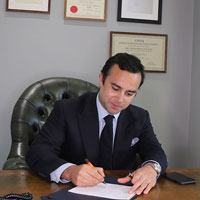
Mr. Christopher D’Souza MBBS MSc MRCS
Hair Transplant Surgeon & Medical Director
Talk to your Surgeon about your hair loss
Call us +44 (0) 207 770 6538
Mr D’Souza personally leads each new patient call and consultation.
What’s involved at a consultation?.



